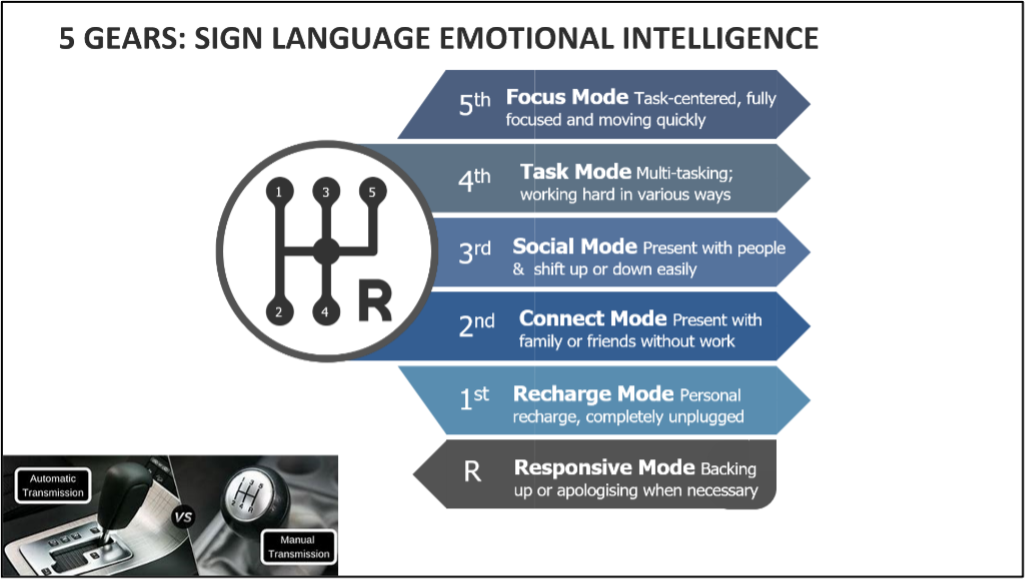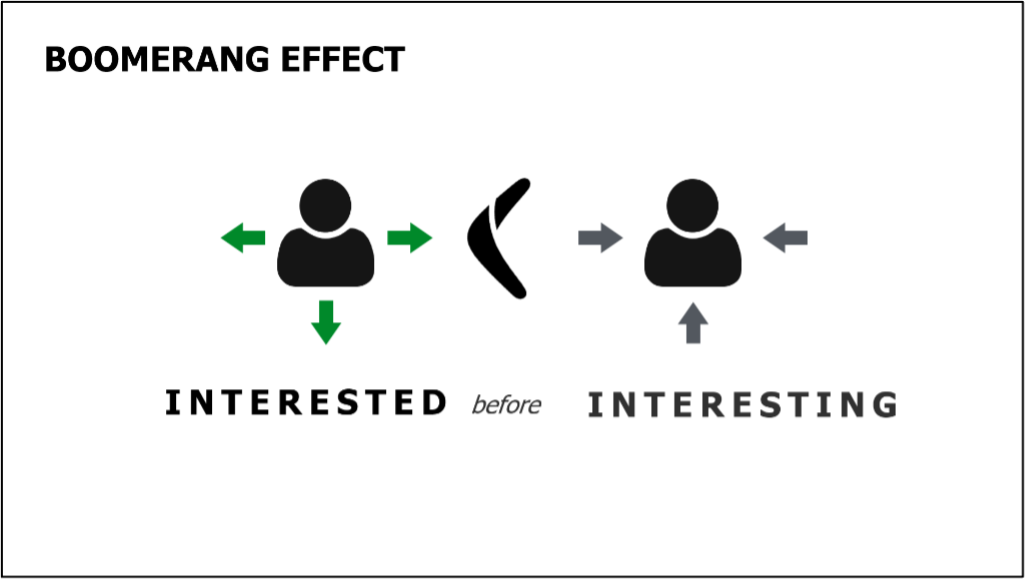Connect with Us
602 Park Point Drive, Suite 225, Golden, CO 80401 – +1 303.495.2073
© 2025 Medical Affairs Professional Society (MAPS). All Rights Reserved Worldwide.
Who remembers learning to drive a manual car?
It wasn’t easy shifting gears. When you are learning to drive it is jerky, managing the clutch and accelerator, and focusing on the road. It took practice to move fluidly through the gears and you couldn’t start the car straight away in 4th. Driving is difficult, with all the inputs and decisions that need to be made. The same goes for our leadership and our relationships in the hybrid work environment.
Just like a car, if you start your day straight away in the morning in work mode (4th & 5th gears), and you drive all day like that, you are going to burn out fast! The reality for many of us is that we are over productive, spending too much time in our work gears and under present in our relationships and in our self-care! We see the framework of 5 gears as a sign language for emotional intelligence and it’s helping Medical Affairs and MSL Teams around the world learn to lead more effectively.

By Annree Wogan, co-founder of Garrolagh Consulting

Just like a car, you need to start your engine in 1st gear (Recharge, Refuel mode). First gear helps you to get into the day in a way that will not wreck your internal transmission. If you don’t learn to access 1st gear, your capacity to help others will diminish over time and you will undermine your leadership influence. First gear maximises your productivity and effectiveness when it is time for work. In addition to rest and recreation, exercise is vital for leaders to stay healthy long-term. Know your wiring and what healthy recharge looks like for you. Ask people to hold you accountable to developing a healthy 1st gear schedule. Sleep is not optional; an essential part of first gear is getting a good amount of sleep.
Performing well in 2nd gear (Connect mode) requires being physically, emotionally, and intellectually present (NO WORK) with the most important people in your life, which leads to healthy relationships, better conversations, less drama, and re-establishes your priorities. Transitioning effectively from work to home life in the hybrid work environment is not easy. We need markers as triggers to shift our mind intentionally from work gears into 2nd gear. Markers can be a location on the way home from work; time, where you close the door on the home office and intentional leave work behind; walking around the block. In 2nd gear, close off work in your head and be intentional in how you transition into your non-work gear.
Your true legacy will be created in 2nd gear (Connect mode). People will remember your 2nd gear moments more than they will remember your achievements. Schedule 2nd gear time with friends and family just like a business meeting. Make sure your conversation stays in 2nd gear, rather than defaulting back to 4th gear (Work mode). Be intentional and selfless. Ask what the people in your life love doing with you and schedule time to do it. Create boundaries and allocate time to focus on 2nd gear. When you want to access 2nd gear, put your phone away or turn it off.
Third gear is social time at work, which is vitally important in the hybrid work environment. This is a time to connect with people; it’s where relationships and influence happen. Third gear is where people in your team or external KOL’s are asking, “Are you trustworthy? Are you likeable?” You can lose influence if you don’t do 3rd gear well. Here are my 3rd gear tips: Start all meetings with five minutes in in 3rd gear. Use the 0:58 rule — spend 2 minutes before your meeting shifting from work gears, to be intentional and present in 3rd gear. Invest in in-person gatherings. Have Virtual meetings that are only 3rd gear, no work talk.
If you find 3rd gear hard, or you overuse it, you need to work on being interested in people before working on being interesting yourself – I call this the Boomerang Effect. Learning how to be curious about people will lead to being engaging with people. Connection happens in two or three well thought out questions. Learn how to ask simple questions to connect with new people. Remember as human beings we are made for relational and human interaction more than we are made for virtual meetings. As leaders we need to re-establish that culture of human interaction.

Fourth and fifth gears are for work, with 4th being for multitasking and 5th being for focus.
No one does all the gears well and moving fluidly between them is a developed skill. Be intentional in spending time in your weakest gears. Know when you are using each gear, every day. The goal is to move from manual to automatic so that you can be in the right gear at the right time with the right people.
You can use this idea of 5 gears to build a healthy Medical Affairs team. Initiate dialogue by sharing your own reality of your 5 gears order. Let your team know what gears you struggle with the most. Ask the team to discuss in which gears the team is proficient and in which the team struggles.
Moving individually and as a team through the 5 gears can help you bring emotional intelligence to your Medical Affairs work in a hybrid environment.
602 Park Point Drive, Suite 225, Golden, CO 80401 – +1 303.495.2073
© 2025 Medical Affairs Professional Society (MAPS). All Rights Reserved Worldwide.

 Consistency in HCP Contracting: Why It’s Important and Best Practices for...
Consistency in HCP Contracting: Why It’s Important and Best Practices for...